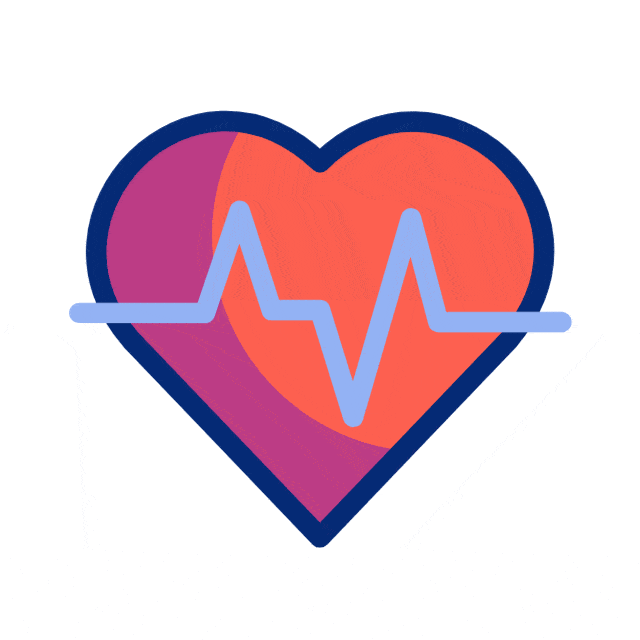Category : Pain
Pain can affect all of us. It is estimated that one in three people experience some type of ongoing, chronic pain. Acute pain is protective, alerts you to an injury and usually a symptom of the underlying disease typically lasting for upto 30 days. Chronic pain is pathological and usually a disease in itself.
What is chronic pain?
chronic pain is any type of pain that lasts for longer than three months. Pain that lasts longer than is reasonably expected for the injury. It can happen anywhere in the body. The pain can be there constantly all the time, or it may come and go.
Chronic pain can interfere with your daily activities, such as working, having a social life and taking care of yourself or others. It can lead to fatigue, mood swings, depression, anxiety and trouble sleeping, which can make pain worse thus affecting quality of life. This response creates a cycle that’s difficult to break.
What are the various chronic pain conditions?
Chronic pain can come in many different forms and arise from any part of the body:
- Osteoarthritis or joint pain (knee, shoulder, hip)
- Back pain
- Headache, including migraines
- Orofacial pain- Trigeminal neuralgia, Glossopharyngeal neuralgia
- Neck pain
- Frozen shoulder
- Peripheral vascular disease
- Fibromyalgia
- Neuropathic pain syndromes like diabetic neuropathy, postherpetic neuralgia, CRPS etc
- Visceral pain like chronic pancreatitis
- All types of Cancer pain
How is chronic pain diagnosed?
Pain is subjective, only the person experiencing it can identify and describe it. If you have long-lasting pain you should see a pain specialist since a diagnosis of chronic pain is crucial for proper treatment. The pain specialist will take your detailed pain history including questions like:
- Where the pain is located?
- How intense it is, on a scale of 0 to 10
- Is it dull aching type or associated with tingling numbness?
- How often it occurs?
- How much it’s affecting your life and work?
- What makes it worse or better?
- Whether you have a lot of stress or anxiety in your life?
- Whether you’ve had any illnesses or surgeries?
The pain specialist may examine your body and order necessary tests and imaging studies to look for the cause of the pain. Diagnostic blocks are given to find out the exact cause.
What is pain management?
Pain management is a branch of medicine that is devoted to the diagnosis and treatment of pain and related disorders by the application of interventions and multidisciplinary approach.
How is chronic pain treated?
A pain specialist will tailor the treatment to the source of your pain. The multidisciplinary treatment includes a variety of strategies- lifestyle changes, posture correction, physical therapy, psychotherapy, medications, and interventional pain procedures. The combined knowledge of various medical professions and allied health professions is used to ease pain and improve the quality of life of those living with pain. In selected cases, a surgical option may need to be considered.
Medication:
In addition to the commonly used analgesics, neuropathic pain medication like antidepressants and anticonvulsants are frequently used in chronic pain. Intravenous infusions of lignocaine and ketamine are used for desensitization. Botox injections for migraine headaches and myofascial pain.
Interventional pain management:
Interventional pain management is an integral part of chronic pain management. Interventions are minimally invasive, non-surgical and target specific procedures to diagnose and treat various painful conditions. It fills the gap between pharmacologic management of pain & more invasive operative procedure. All these interventions are done under X-Ray or ultrasound guidance. The type of treatment you receive will be based on your specific condition and symptoms, as each type of treatment varies in terms of invasiveness.
Some of the most common techniques include:
Nerve blocks:
Injection of local anesthetic and a corticosteroid near nerves that are responsible for chronic pain. These block pain signaling and reduce inflammation.
Neurolytic blocks:
Nerve blocks/ sympathetic blocks using alcohol and phenol for cancer pain.
Radiofrequency ablation (RFA):
This technique uses a radio wave to produce an electrical current, which is then used to heat an area of nerve tissue disrupting pain signals.
Regenerative therapy:
Injection of platelet-rich plasma (PRP) in the joints, ligaments, tendons for osteoarthritis and sports injuries to enhance the natural healing process to rebuild damaged tissues.
Other Injections:
Some common types of injections are, Facet Joint Injections, sacroiliac joint injections Trigger point Injections and IMS therapy
Spinal Cord Stimulation:
Electrical leads are inserted close to the spinal column, while a tiny generator is inserted into the abdomen or buttock. The generator emits electrical signals to the spinal column, thus blocking the ability of the brain to perceive pain. This is an advanced treatment for refractory pain.
How can I cope with chronic pain?
Besides taking medications and nerve blocks, there are some lifestyle changes one can adopt to cope with chronic pain:
- Avoid smoking and alcohol, which can cause more problems with sleep and pain.
- Eat a healthy diet.
- Maintain good posture.
- Practice yoga and exercise regularly.
- Get enough sleep.
- Avoid over-exertion and take out time for rest and self-care.
- Think positively.
- Try relaxation techniques like deep breathing and meditation.
If you have chronic pain, you should consult a pain specialist. There are ways to manage your pain to help you toward a more comfortable life.





